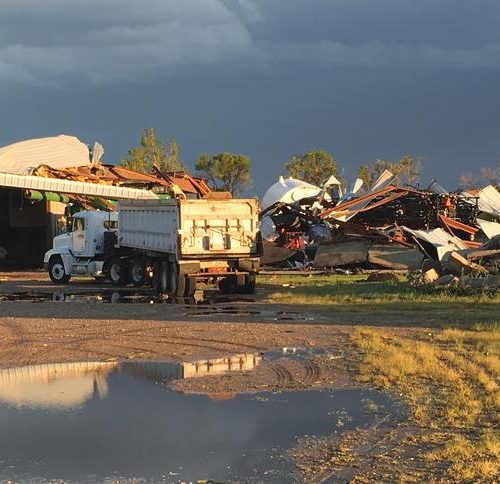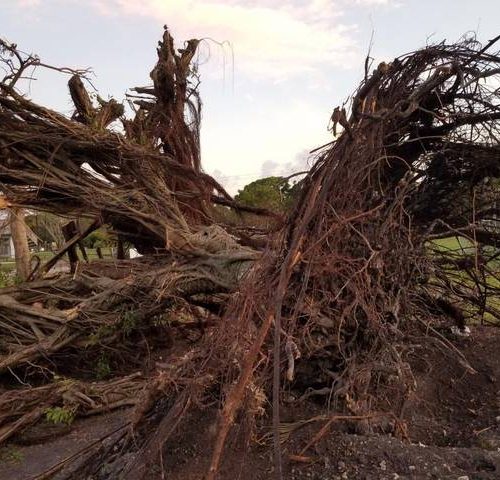As six tornadoes corkscrewed across Minnesota on May 6, 1965, 5-year-old Sharon Carlson rode her tricycle through the shallow floodwaters accumulating in her family’s basement.
Her two younger brothers nearby, Carlson wasn’t fazed by the terror spiraling out of the spring sky. But, she recalls now, her parents raced through the family’s Columbia Heights home, looking out windows and occasionally shouting down to the kids to stay put.
The family emerged unscathed that day, but the storms left a trail of terrible damage. Thirteen people were killed, and nearly 700 injured. Fridley alone lost 400 homes. Farms, churches, schools, offices and other buildings were struck across a long stretch of rural and suburban Minnesota from New Auburn to Blaine. The storm caused about $50 million in damage, according to statistics kept by the state Climatology Office — or about $400 million today.
Carlson, who still lives in the northern suburbs, wondered if the tornadoes that passed near her childhood home were the most destructive ever recorded here. So she turned to Curious Minnesota, a Star Tribune feature that answers reader questions.
The quick answer is yes, many consider the tornadoes that struck Minnesota that day in 1965 to be the most destructive in state history. Four of the tornadoes were considered F4, the second-most-powerful rating on the Enhanced Fujita Tornado Intensity Scale, which rates tornadoes by wind speed.
But how do you define destruction: Is it by power, by lethality, or financial impact?
If it’s by power, Minnesota has seen three F5 tornadoes since the 1950s, when the rating system was first used. A June 20, 1957, tornado tore through Fargo and Moorhead, killing 10. On June 13, 1968, a tornado killed nine when it struck Tracy; and a June 16, 1992, tornado that hit Chandler killed one person. All of these tornadoes had wind speeds above 200 miles per hour, earning the F5 rating. (Tornadoes in Rochester in 1883 and Fergus Falls in 1919 may have been F5 as well, but they predate the Fujita scale.)
But none of these was the deadliest. That dark distinction belongs to the April 14, 1886, tornado that ravaged St. Cloud and Sauk Rapids, killing 72 people. Among the dead were 11 members of a wedding party, including the groom. (The bride eventually remarried.)
The second-deadliest tornado in state history hit Fergus Falls on June 22, 1919, killing 57, while the third-most-lethal was the Rochester tornado of Aug. 21, 1883, which killed 37, according to the state Climatology Office. In the aftermath of the Rochester twister, Mother Mary Alfred of the Sisters of St. Francis proposed that the city build a hospital, enlisting the help of two young brothers named Mayo to start what would become the Mayo Clinic.
National Weather Service meteorologist Todd Krause noted that those tornadoes of a century ago tended to be more deadly because warning systems were rudimentary.
Finally, if we consider property damage, the 1965 outbreak was the worst. Because it struck densely populated areas, it caused tens of millions of dollars in damage within a few hours. Some larger tornado systems may have caused more physical destruction, but fewer homes were lost because they took place in rural areas. The 1992 tornado system that hit Chandler, for example, spawned 27 total tornadoes. Even more were recorded on June 17, 2010, when 48 twisters walloped 22 counties, from Wadena to Albert Lea.
Some other contenders for most destructive include a tornado system that struck on Aug. 6, 1969, but most of its damage was inflicted on northern forests, said state climatologist Kenneth Blumenfeld. It killed 12 people, injured 70, and spawned eight tornadoes, including one that was nearly two miles wide.
Carlson said to this day she’s not afraid of tornadoes, despite her childhood close call.
“I absolutely love storms,” she said. “It helps to be oblivious as a 5-year-old.”
by Matt McKinney (2020, Sept 18) Star Tribune





